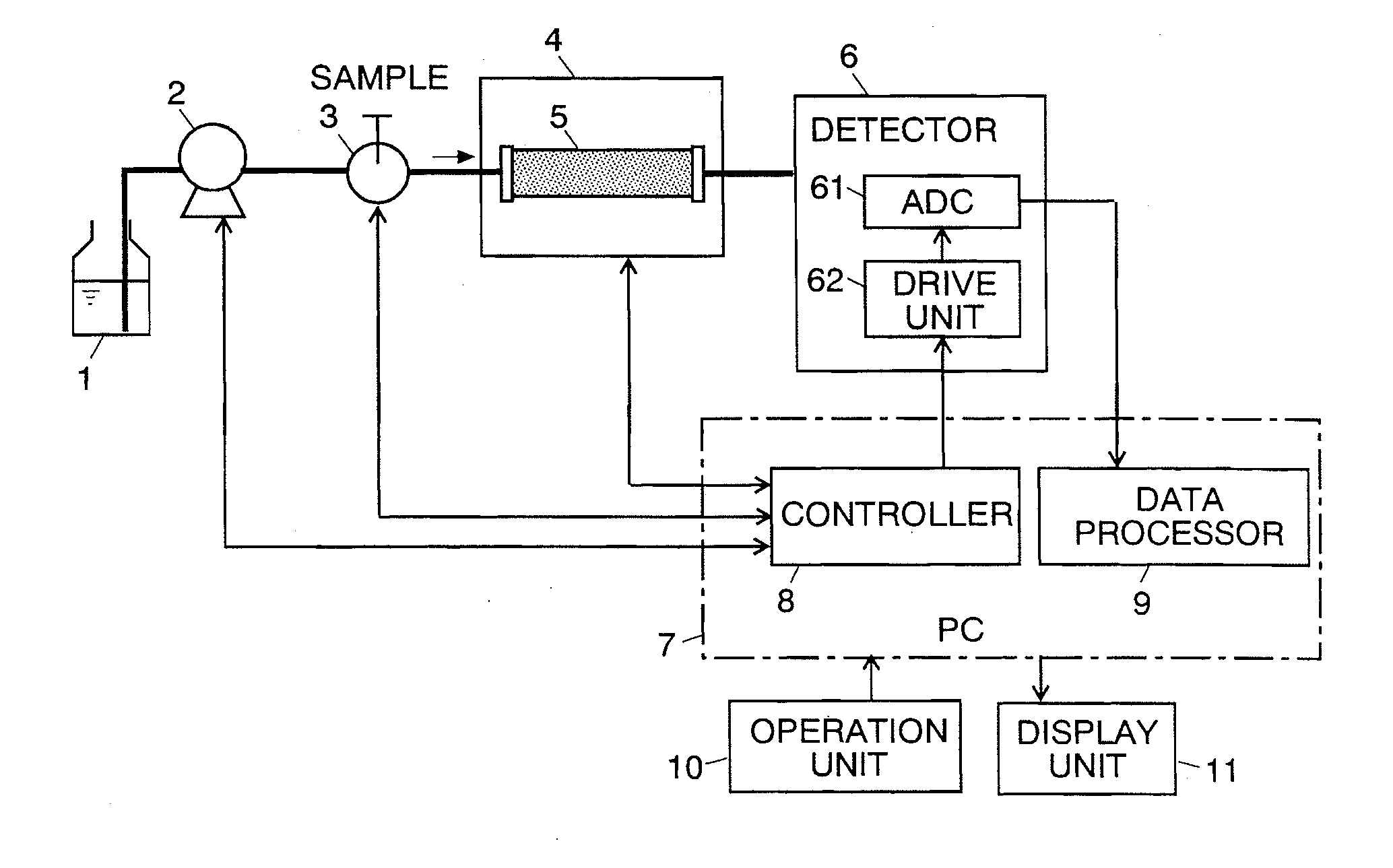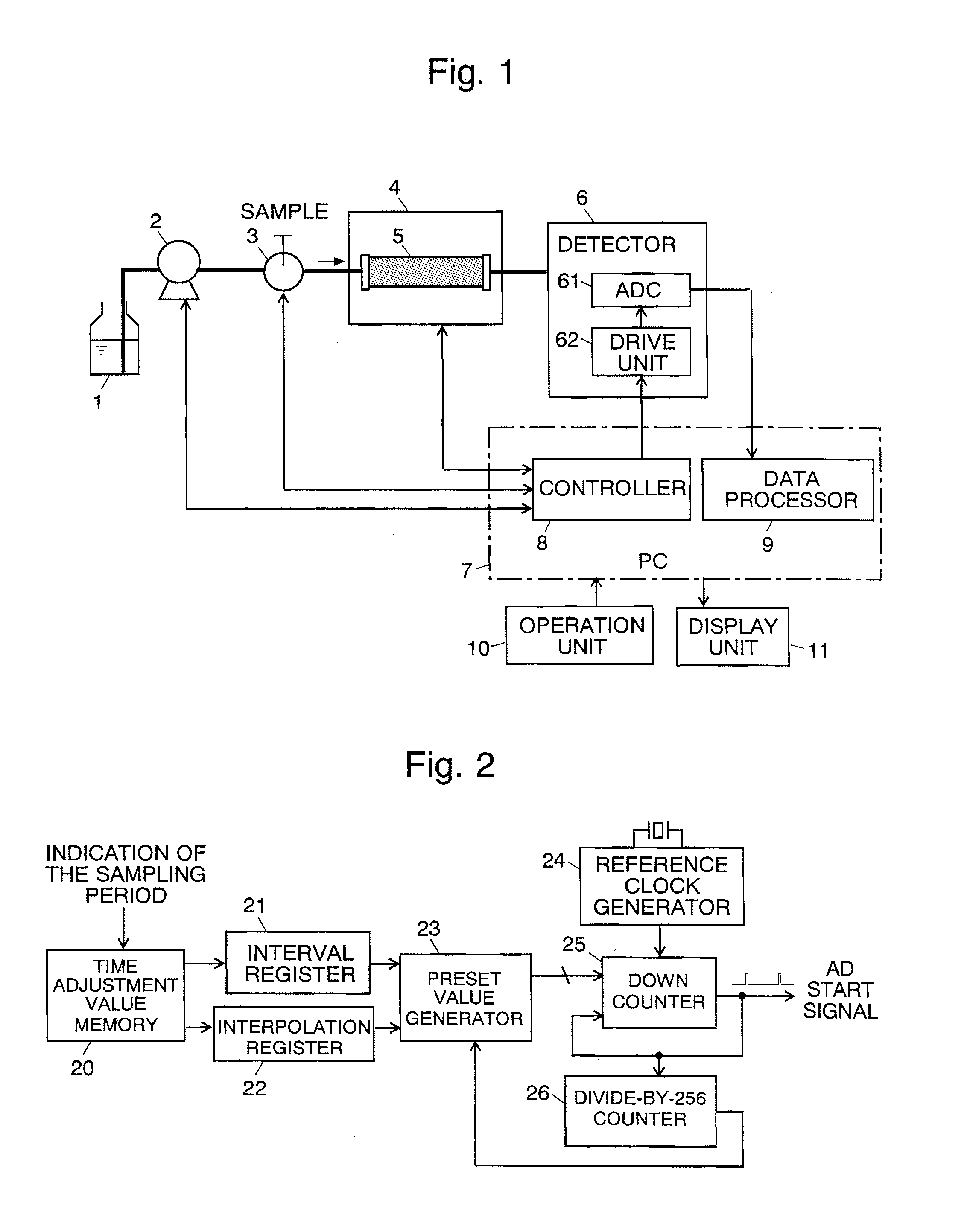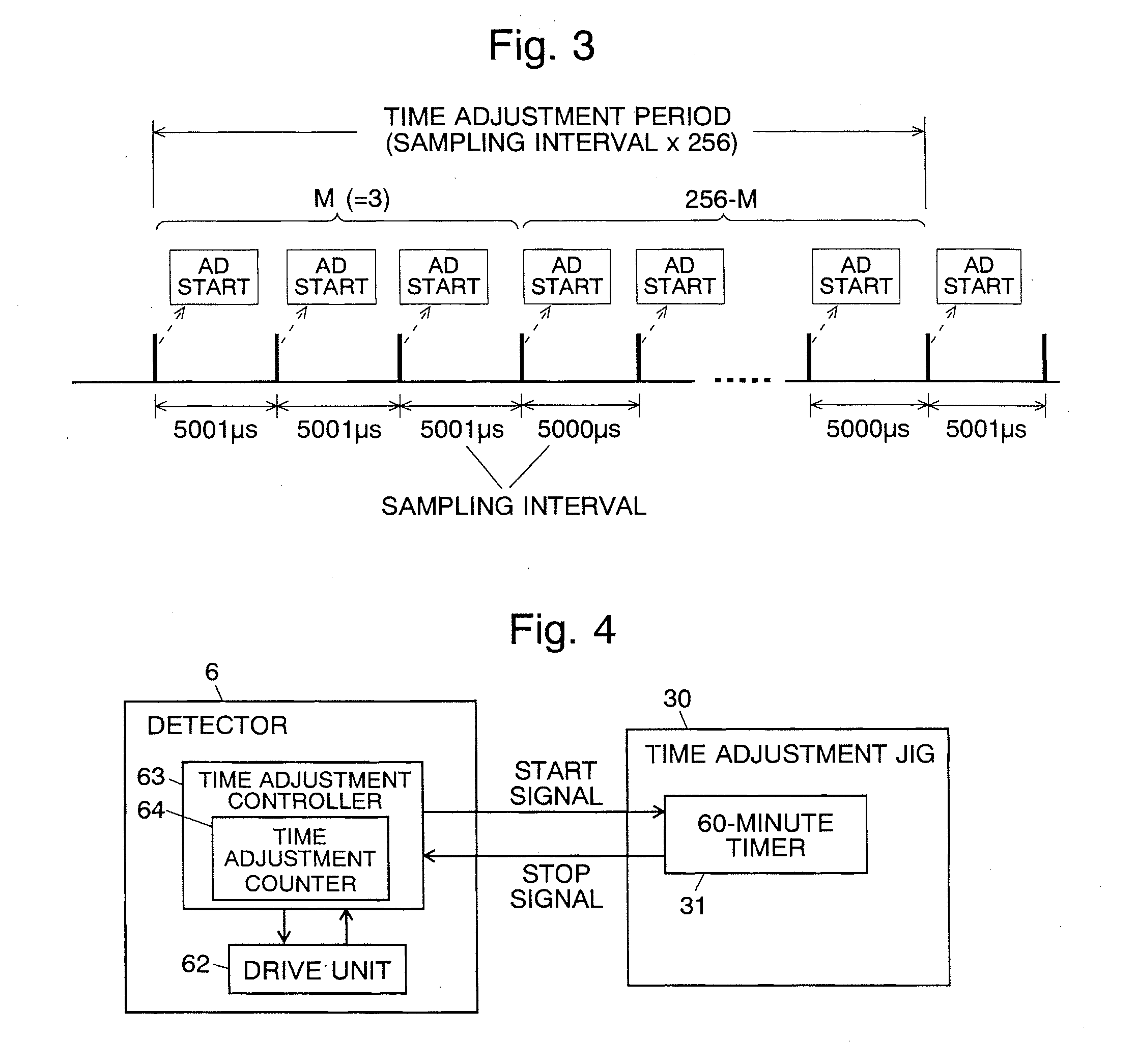Detector for chromatograph and method for adjusting the same
a technology of chromatograph and chromatograph, which is applied in chemical methods analysis, instruments, material analysis, etc., can solve the problems of increasing the amount of data generated per unit time, increasing the required amount of memory, increasing the load on the communication system and the central processing unit (cpu), and reducing temporal resolution, so as to increase the absolute precision of the retention time of each peak, the effect of eliminating the unnatural display of the output screen showing the chromatogram and high degree of synchronization
- Summary
- Abstract
- Description
- Claims
- Application Information
AI Technical Summary
Benefits of technology
Problems solved by technology
Method used
Image
Examples
Embodiment Construction
[0056]An embodiment of the liquid chromatograph (LC) system using the detector for a chromatograph according to the present invention will be described with reference to the attached figures. FIG. 1 is an entire schematic configuration diagram of the LC system according to the present embodiment.
[0057]In FIG. 1, the sending pump 2 sucks a mobile phase from the mobile phase container to send it to the column 5 through the injector 3 at an approximately constant flow rate. The injector 3 injects a sample liquid to the mobile phase at a predetermined time point, in correspondence to the control signal supplied from the controller 8. The sample liquid is sent to the column 5 by the flow of the mobile phase, and a variety of components in the liquid sample are temporally separated while passing through the column 5. The column 5 is contained in the column oven 4, and its temperature is controlled at a constant temperature or in accordance with a predetermined heating program under the co...
PUM
| Property | Measurement | Unit |
|---|---|---|
| frequency | aaaaa | aaaaa |
| time | aaaaa | aaaaa |
| time | aaaaa | aaaaa |
Abstract
Description
Claims
Application Information
 Login to View More
Login to View More - R&D
- Intellectual Property
- Life Sciences
- Materials
- Tech Scout
- Unparalleled Data Quality
- Higher Quality Content
- 60% Fewer Hallucinations
Browse by: Latest US Patents, China's latest patents, Technical Efficacy Thesaurus, Application Domain, Technology Topic, Popular Technical Reports.
© 2025 PatSnap. All rights reserved.Legal|Privacy policy|Modern Slavery Act Transparency Statement|Sitemap|About US| Contact US: help@patsnap.com



